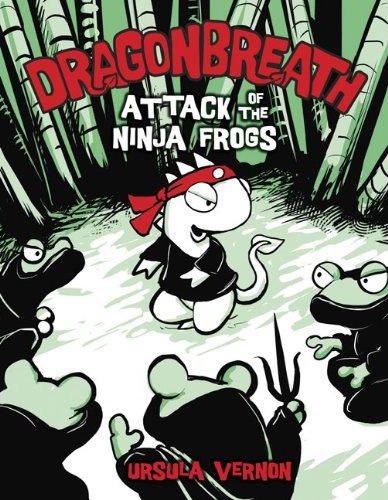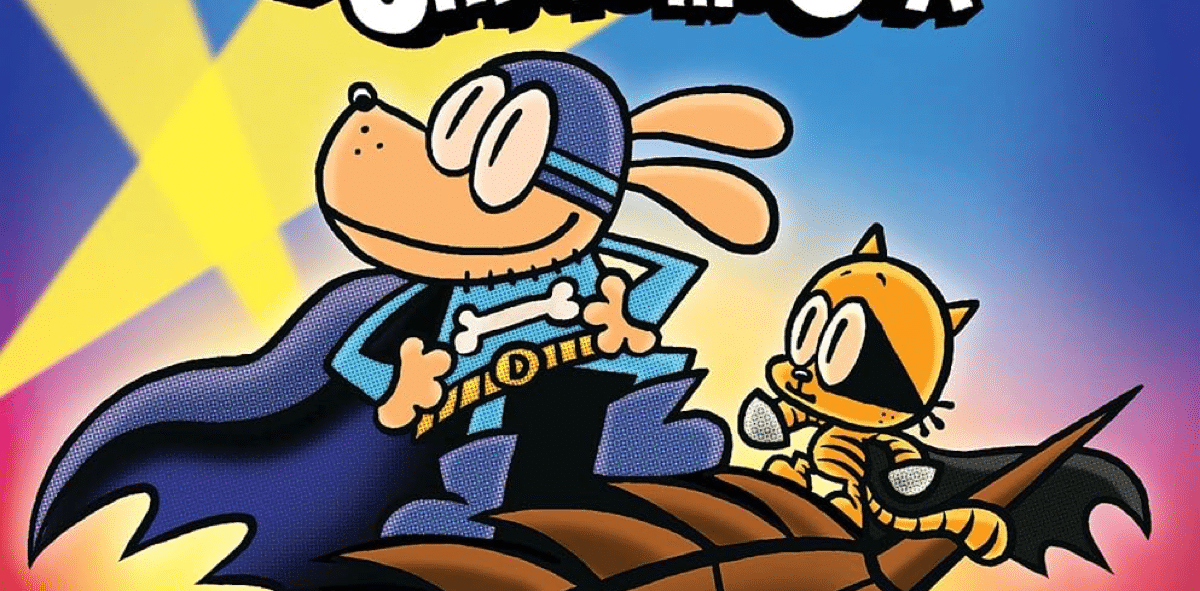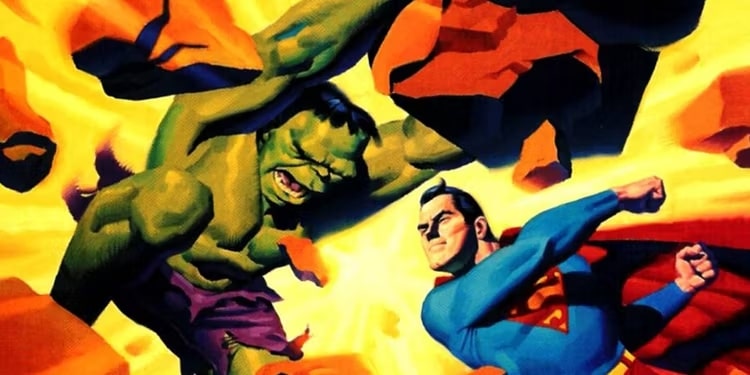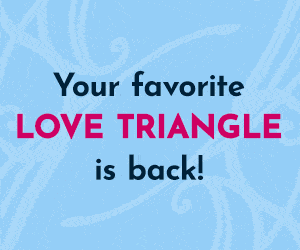It’s my FAVORITE day of the year, when Brian Hibbs posts the year-end sales from bookstores via the BookScan chart. Now we know these numbers are significantly low, but as I always say, they present a metric.
The huge takeaway? Well, we all knew THE WALKING DEAD was a juggernaut—sales in this franchise would have made it the #3 publisher all by itself—but after that it’s kids’ comics all the way, led by the maybe-comics of Dork Diaries, but following by Big Nate, Ninjago, Ursula Vernon’s Dragonbreath, DRAMA, and so on.The #1 comics for Dark Horse, BOOM!, and IDW were all kids’ comics—AVATAR, ADVENTURE TIME, and MY LITTLE PONY, respectively.
Scholastic, Pantheon, and Andrews McMeel all sold way more books than Marvel. Hibbs has some strong words for Marvel’s lackluster bookstore sales:
I think it is very difficult to look at Marvel’s backlist business as anything other than an abject, deeply embarrassing failure, especially when you consider that there was a film that grossed a billion-and-a-half dollars, and was not only also a critical hit, but a near perfect encapsulation of what’s awesome about comic books serving as the greatest advertisement for their comics that one could possibly imagine, and Marvel’s best-selling comic in BookScan is… “Kick Ass 2.”
OUCH.
The book of the year for me? Ursula Vernon’s Dragonbreath, a series I have never seen covered in the comics press by a known comics creator (she also draws the webcomic DIGGER) that outsold every comic from a “comics” publisher except THE DARK KNIGHT by Frank Miller. I never knew this existed until I visited my family and saw my 7-year-old female cousins reading it.
I’ll have some more breakdowns of the numbers in a future post, but for now the message—which you already know if you’ve been reading The Beat for any length of time—is that kids’ comics are the biggest growth area for the medium right now, and this strong new generation of comics readers is a wave the medium should be able to surf successfully for years to come.













For anyone with kids this is totally not a surprise. I am lucky enough that my local comics store has a nice selection of kids’ comics. Most of them, however, I’d never even let my kid inside. And they don’t even carry the Ninjago or Dragonbreath comics (too bad, their loss). When is the comics world going to pay attention to this demographic? Never mind, they don’t need to. They’re doing just fine without Marvel and DC.
I wouldn’t say the Bookscan numbers significantly low, just significantly wrong. They may be “almost right” in some cases, “80% right” in other cases (as PW claims), “abysmally low” in other cases, and “dead-on correct” in the rest.
Also, great news on the kids’ comics best-sellers! This is a hopeful sign that bookstores are taking more chances with comics in general, specifically children’s which is a safer risk across all publishing categories. It may surprise many, but the biggest holdout in kids’ comics at retail isn’t comics stores, but indie bookstores.
I love, love, love Ursula Vernon. Seriously, my walls are covered in her prints. The difficulty of getting Dragonbreath into UK book stores is one of the banes of my life!
I wrote a lengthy article on this back in… October I think on my own site, highlighting the fact that Kids Comics were the second biggest genre grower across UK book stores – up 86% year on year. Which is MASSIVE, particularly given the downwards trend of general fiction (not including Graphic Novels which is still on an upturn as well).
In my own store I ran a kids comics bay for a few months and it accounted for 5-10% of all kids sales every month that it was in existence. Yet sure enough as soon as I took my eye off it, it got packed away to make way for kids annuals that sell peanuts. Sigh.
A quick search on Diamond’s retailer site shows that DRAGONBREATH is something they’ve never offered. Which would be why most comic shops don’t have the book: like The Beat, they’ve never heard of it until now.
Dragonbreath is marketed as fiction, not comics. If you’ve never seen the books, each volume is mostly illustrated prose text with maybe 30% of the book in comic book format pages interspersed throughout. The series is very popular in my school, right along with the Diary of a Wimpy Kid series, which is also cataloged as fiction.
It was observed to me by a third party that for a good part of 2012 Barnes & Noble was not stocking the “top 100” DC Comics, which I entirely forgot about in my BookScan 2012 report.
There are published reports that say that this ended at the end of June 2012, but there’s also reports from everyone’s favorite muckraker, Rich Johnston, that some/much of the books were returning to some B&N locations before 2011 even ended.
What does this actually do to the charts? I have no real idea. Typically 4th quarter is the strongest sales quarter, so, in theory, this should have impacted DC’s 2011 numbers much stronger than 2012, but even that’s uncertain — how much demand was simply delayed until the books returned to stock, how much was shunted over to Amazon or indy book stores? How much unmet demand yielded no sale for DC? I have no frickin’ idea, but at the very least it should have been NOTED in the column, and that’s a lousy mistake for me to have made.
There was just 12k difference (701k vs 689k) in sales between DC and Image this year, so it’s possible, mayyybe even likely that DC actually “would have” been the #1 western publisher, but I can only analyze the numbers that are there, rather than the ones that aren’t. Still…. asterisk that analysis, I think, to be safe.
Thanks!
-B
From Heidi: “kids’ comics are the biggest growth area for the medium right now, and this strong new generation of comics readers is a wave the medium should be able to surf successfully for years to come.”
To Heidi’s point here, I’m not at all convinced this inherently parses.
Historically, what happens is that “kid” readers ENTIRELY LEAVE the hobby at (roughly) the onset of puberty, to POTENTIALLY “come back” five-ish years later once they reach late HS/early college period, often driven by “nostalgia” for what they liked as kids.
The relative power of Superhero comics was that they (once!) worked on a level appealing to children, and on a DIFFERENT level appealing to college kids — I’m not necessarily convinced that kids reading DORK DIARIES and DRAGONBREATH and BIG NATE today has a natural and native “return path”.
The more important thing, to me, is to make sure that we have an INCREDIBLY STRONG “tween” list (The DRAMA / Rick Riordan kind of path) so that kid readers never “break the habit” to begin with — there’s not enough super-strong titles for this cohort yet, IMO, and no historical indications that it will actually WORK in retaining audiences as their bodies and minds shift into adulthood.
-B
(in other words: kids comics are pretty much easy, low-hanging fruit. One truth that I have found is kids pretty don’t care WHAT comics they read, they naturally and natively just like comics, whatever they are, good, bad, or in the middle)
(That’s usually because someone else is paying for it! *grin*)
-B
I never gave up comics, and neither have my two sons, nor my daughter-in-law. My older son started reading comics as a kid, transitioned to manga in middle school, and still reads manga (and the occasional superhero comic) – he read manga all through high school. My younger son is not a real manga fan – he reads through all of the DC comics he can get his hands on, plus The Walking Dead, and whatever else he finds in the house (which is a LOT – I’m a comics reviewer); he’s now a high school senior, and comics are his preferred reading material. My daughter-in-law started reading manga in high school and never stopped.
Come to think of it, the local public library sees a lot of young people who still love manga – they started in middle school and are still reading it in high school. And a lot of them are creating their own art. I think Mr. Hibbs may not be quite right in his assertion that most teens drop comics.
I’ll keep tabs on my students and see if those who are picking up comics in my school library as 1st and 2nd graders will continue into middle school. I know that some of my current 8th graders started reading comics in 3rd grade and still like them. Since they’re not reading superhero comics, but lots of indie kid comics, I wonder if that will keep them reading into their teens and beyond.
I think Brian is right about that historical trend of “give up and come back for nostalgia” trend when looking at superhero comics reading habits. Of course, there’s no real need, content-wise for any tween to leave superhero comics when they hit 5th grade, it just kind of happens that way. (Or at least it seems to.)
But kids who are exposed to the comics MEDIUM and love it (as they almost always will, as Brian points out) really truly have no reason to stop at any point in their reading development and I’m not sure they do. When I “grew out” of superheroes myself (ha!) before coming back to it in college, I had plenty of Vertigo, Fantagraphics, and other books to keep me enthralled through high school. Nowadays kids have even more non-superhero options than I did.
And they don’t have to be specifically tween comics. A precocious 11-year-old reader is already reading adult books anyway and if they’re not, there are still plenty of more junior comics to read.
“The more important thing, to me, is to make sure that we have an INCREDIBLY STRONG “tween” list (The DRAMA / Rick Riordan kind of path) so that kid readers never “break the habit” to begin with — ”
Brian is right that there needs to be more books for each age range and demographic. Jumping from Tiny Titans to Walking Dead with little in between is going to be a tricky transition! But the teenagers (with their darn apathy and contradictory stance on anything people tell them) have always been tricky to market too.
To be clear(er?), I think that the “natural attrition” that happens isn’t connected whatsoever to superhero comics — it’s just that superhero comics (USED TO!) have a much clearer “return path” for post-adolescent readers. There wasn’t the same natural thing for Archie and Harvey readers
But SH comics haven’t been appropriate for children in a really long time, so that’s the old paradigm. Let’s not fixate on it too much “superheroes” versus “not superheroes” — that’s not especially fruitful, IMO.
Rather, when one discovers sex, discovers dating and fashion and cars and whatever other thing it is that consumes adolescent brains, the tendency is to “leave childish things behind”. Comics, historically, in America, were seen as childish, though that has certainly been changing, culturally, over the last decade. Enough so as for there to be a natural, inviolate path like Heidi suggests? I’m not convinced of that… yet.
I think we’d need another 10-20 years of history to tell us whether that is true or not — certainly the post-adolescent Manga readers have not *appeared* to have started returning as of yet, right? (Because it would sure seem to me that a big big chunk of the collapse of the US Manga market stemmed from “aging-out” readers…..)
-B
Obviously, I disagree with Brian, although it comes down to proving a negative. We already know what happens when you completely abandon the kids market — the 90s. Crash and burn. The ONLY thing that kept Marvel and DC’s characters current for kids was the cartoons — DC in particular should kneel down and thank Bruce Timm and Paul Dini every day as those cartoons kept the DC characters alive for younger generations.
Luckily, the 90s also saw the rise of excellent comics for adults — from Chris Ware to Vertigo to Hellboy. So when the kids who didn’t read comics got older the adventurous ones had something to read and buy.
Starting in the 00s we saw the rise of the bookstore market with manga drawing in tweens on up, and now a very healthy, growing market for kids comics. Although manga readers have aged out, the core manga titles — Naruto, Death Note, etc, still are strong sellers.
I remember many 90s retailers — and I’m pretty sure Brian was among them — telling me they didn’t want kids in their stores. I think this was a natural fear that kids would see adult content and the New Wertham would arise. Myself, and a few others, thought this was a very dangerous precedent, and the American comics industry as we know it came pretty close to dying out.
I think we have a pretty good model of how comics readers might have “aged up” by looking at the 80s, when there were 11,000 comics shops and Boris The Bear sold 50,000 copies. Children’s comics flourished in the 60s and 70s with the newsstands – Archies, Gold Key, Harveys. As that market died out — the legendary 7-11s of yore — readers aged up into Cerebus and Love and Rockets — all of which sold what Green Lantern does now. It was a smaller audience than read the newsstand comics true, but the problems of distribution, finding a store and mancave like stores was still there.
I don’t mean to sound like everything is solved, but we have by far the strongest range of material, most dedicated, mature creators and tenacious, savvy retailers that we’ve had since I ‘ve been around. Not every kid reading Big Nate is going to read Captain Marvel or The Voyeurs. But they’re not going to say “What’s a comic book?” either. That’s bound to be a plus.
“To be clear(er?), I think that the “natural attrition” that happens isn’t connected whatsoever to superhero comics —”
–My sense is many teens eventually reject anything connect anything from their childhoods. Throw away those teddy bears and star wars sheets mom. I’m a teenager now!!! Even 10 years old reject things “for babies” for fear of social stigma. But like you said eventually then can revisit their chilhoods and appreciate things on a nostalgic level. Granted some kids like myself are anti-social and never grow up, thus resulting in a career in comics. ;)
” it’s just that superhero comics (USED TO!) have a much clearer “return path” for post-adolescent readers. There wasn’t the same natural thing for Archie and Harvey readers”
I wonder though if “the path” is people having their own kids and then wanting to introduce their children to their old friends, whether it be Archie, Uncle Scrooge or their favorite superheroes. But now the superheroes are tricky because you have to make sure you know which are the okay ones for kids to read. Where as Archie and Disney are always consistent with their legacy?
“Granted some kids like myself are anti-social and never grow up, thus resulting in a career in comics.”
Win. :)
Comments are closed.